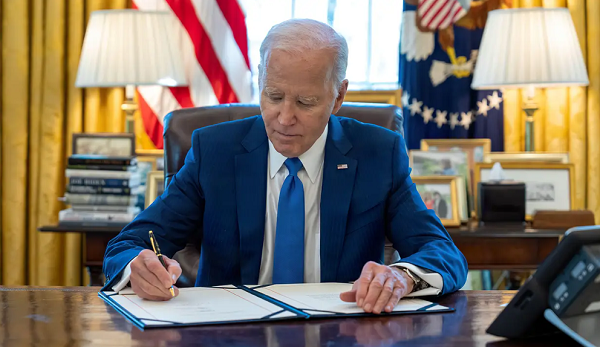Yes, Congress Finally Funded Health Spending for 2024
by Joyce Frieden, Washington Editor, MedPage Today
April 3, 2024
 Something important for the world of healthcare happened very quietly a week and a half ago: President Biden signed the fiscal year (FY) 2024 appropriations bill for HHS into law.
Something important for the world of healthcare happened very quietly a week and a half ago: President Biden signed the fiscal year (FY) 2024 appropriations bill for HHS into law.
Biden signed the $1.2 trillion package of six bills — which also included funding for the Defense Department — on a Saturday evening, March 23. “This agreement represents a compromise, which means neither side got everything it wanted,” Biden said in a statement. “But it rejects extreme cuts from House Republicans and expands access to child care, invests in cancer research, funds mental health and substance use care, advances American leadership abroad, and provides resources to secure the border that my Administration successfully fought to include. That’s good news for the American people.”
The funding measure includes $117.4 billion for HHS — an increase of a little less than 1% from 2023. “It was largely flat-funded,” David Reich, JD, senior fellow at the Center on Budget and Policy Priorities in Washington, said Tuesday in a phone interview. “You’re basically dealing with a pool of money that was the same as the year before.” There were a few increases — for example, the CDC got $55 million more for public health preparedness and response compared to FY2023 — but not many.
Reich said he was not surprised by the flat funding, in part because of the restraints imposed on Congress. Under the Fiscal Responsibility Act, Congress imposed caps on “discretionary” appropriations such as those in these bills. The caps expired in 2021, but then returned this year and will be in place in 2025 as well, Reich said.
“So Congress [has a] grand total, and Congress has priorities within that total, but they don’t have a lot of room to maneuver,” he said. “Is Congress really going to dramatically rearrange the funding there? Unlikely. Will they make a big cut to CDC to make an increase to NIH, or vice versa? No, these are all long-established programs … And major shifts are unlikely because if they’ve survived this far, they are priorities.”
Some of the HHS programs receiving funding in this year’s budget included:
- $8 million (a $3 million increase from last year) in funding for “maternity care target areas” to support loan repayment and scholarships for maternity care services in health professional shortage areas
- $153 million for behavioral health workforce education and training, including $40 million for the Substance Use Disorder Treatment and Recovery Loan Repayment program
- $49 billion for NIH, which includes $2 billion for the Advanced Research Projects Agency for Health (ARPA-H)
- $231 million for influenza planning and response
- $1 billion for domestic HIV/AIDS prevention and research
- $197 million for an antibiotic resistance initiative
- $30 million for suicide prevention
Another funding area that also stayed flat was the $4.1 billion for administering CMS programs — including big ones like Medicare and Medicaid, Reich said, noting that this funding is separate from the money for the actual Medicare and Medicaid benefits, which comes under the category of “mandatory” entitlement spending and is appropriated separately.
“Just running the government costs…
[READ THE COMPLETE ARTICLE HERE]
